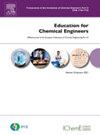This paper describes a practical case study on the benefits and feasibility of a virtual laboratory as a part of chemistry laboratory exercises. Three different objectives that must fit together to create an efficient Virtual Reality (VR) learning experience were found: relevant information content, learning design, and technical feasibility. To achieve these multidisciplinary goals, a simple framework for designing VR learning materials was created. A 360-VR version of a chemistry laboratory exercise was designed and created following this framework. Data on its effectiveness was collected on a laboratory course with over 150 first-year chemical engineering students. The students completed the same laboratory exercise both as a virtual laboratory and in a real student laboratory. In the student feedback, students clearly stated that virtual laboratories cannot replace the experience in a real laboratory, and that the virtual laboratory exercises did not directly increase student motivation. Nevertheless, students showed a very positive attitude towards virtual learning materials and suggested including even more activating materials such as quizzes and interactive videos in the learning materials. Only a few students reported any downsides related to the virtual laboratory exercise. Overall, it was shown that our design principles work in practice as the students reported several real benefits when they completed a virtual laboratory exercise before the real-life laboratory exercise. These benefits included learning the correct way that the laboratory exercise proceeds and how to perform certain tasks correctly.


